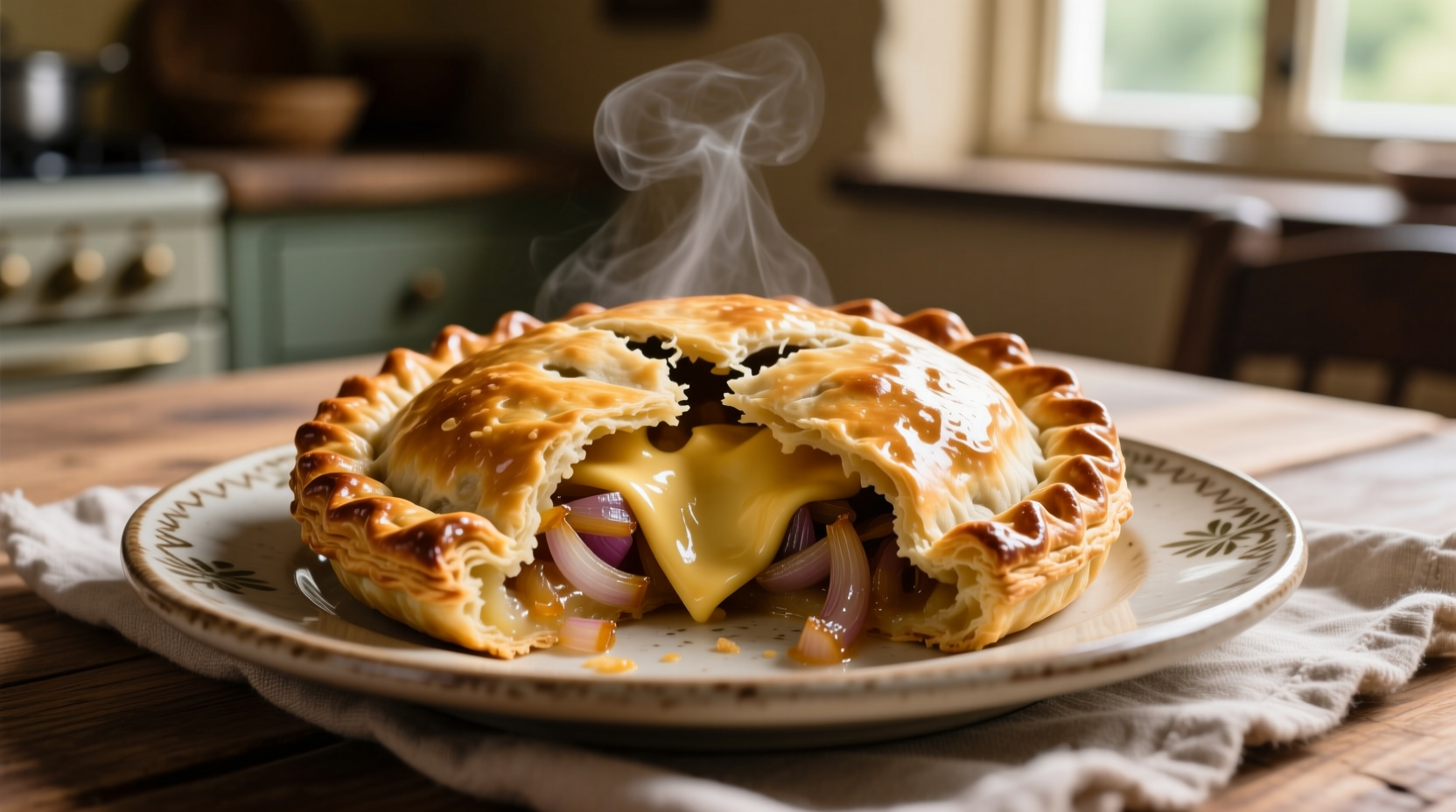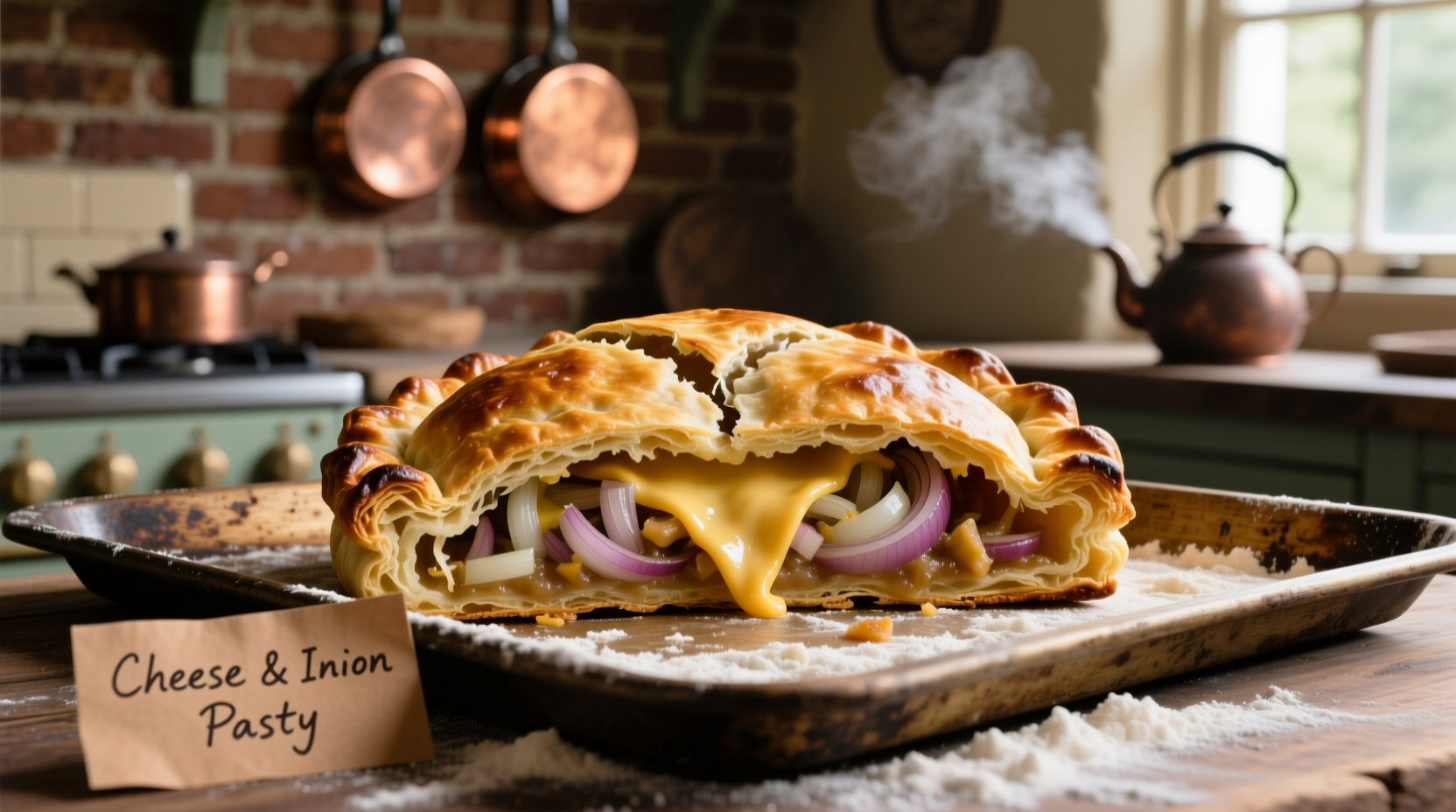The Evolution of a Classic British Comfort Food
While the traditional Cornish pasty has Protected Geographical Indication (PGI) status requiring specific ingredients including beef, potato, swede, and onion, the cheese and onion variation emerged as a creative adaptation. Historical records from the Cornish Pasty Association indicate that miners' wives began experimenting with fillings in the late 19th century when meat was scarce.

What Makes an Authentic Cheese and Onion Pasty?
The distinction between a proper pasty and other cheese-filled pastries lies in specific construction techniques and ingredient proportions. Unlike empanadas or turnovers, a genuine pasty features:
- D-shaped pastry with crimped edge on the side (never top)
- Shortcrust pastry that's substantial enough to hold its shape
- Specific layering technique where ingredients sit in order of cooking time
- No added liquid in the filling (moisture comes from ingredients)
| Traditional Cornish Pasty | Cheese and Onion Variation | Key Differences |
|---|---|---|
| Beef, potato, swede, onion | Cheddar cheese, onions, potato | Vegetarian adaptation |
| Meat closest to pastry edge | Cheese layered over vegetables | Different heat distribution needs |
| PGI protected recipe | No official standard | More recipe flexibility |
Perfecting Your Cheese and Onion Pasty: Practical Guidelines
Creating an authentic cheese and onion pasty requires attention to specific details that distinguish it from similar pastries. Based on culinary research from the BBC Good Food archives, the following factors determine success:
Ingredient Selection Matters
Traditional pasty makers emphasize using:
- Mature cheddar (minimum 18-month aged) for optimal melting and flavor
- Yellow onions rather than red for proper sweetness
- Floury potatoes like Maris Piper that break down slightly during baking
- Lard or butter in pastry for proper texture (never shortening alone)
Construction Techniques That Make the Difference
The proper assembly sequence affects both texture and cooking:
- Roll pastry to consistent 3mm thickness
- Place raw potato at bottom (takes longest to cook)
- Add sautéed onions (cooked briefly to remove excess moisture)
- Top with grated cheese (melts during baking)
- Crimp edge with finger technique for authentic finish
Common Mistakes to Avoid
According to professional bakers at the Royal Academy of Culinary Arts, these errors compromise authenticity:
- Using pre-shredded cheese (contains anti-caking agents that prevent proper melting)
- Adding liquid to the filling (creates soggy pastry)
- Overfilling (causes structural failure during baking)
- Baking at incorrect temperature (under 180°C/350°F prevents proper rise)
When Cheese and Onion Pasty Works Best
This variation serves specific purposes better than traditional meat pasties:
- Ideal for lighter lunches when substantial meat would be too heavy
- Perfect for vegetarian guests at gatherings featuring traditional British foods
- Excellent portable meal for hiking or outdoor activities
- Superior option for children's meals with milder flavor profile
However, culinary historians note it shouldn't replace the authentic meat version when seeking true Cornish culinary heritage. The cheese variation works best as a complementary option rather than a substitute for traditional pasty experiences.
Simple Cheese and Onion Pasty Recipe
Following traditional construction methods while adapting for the vegetarian filling:
Ingredients for 4 pasties
- 500g shortcrust pastry (half butter, half lard)
- 300g mature cheddar, grated
- 2 large potatoes, peeled and diced small
- 2 onions, finely sliced
- Salt and pepper to taste
- 1 egg, beaten (for glaze)
Method
- Gently sauté onions until softened but not browned (10 minutes)
- Roll pastry into four 20cm circles
- Place potato in center, top with onions, then cheese
- Crimp edges using thumb and forefinger technique
- Slash top for steam venting
- Glaze with egg wash
- Bake at 190°C/375°F for 35-40 minutes until golden
Serving and Storage Tips
For optimal enjoyment:
- Allow to rest 10 minutes before serving (lets filling set)
- Serve with pickled onions for authentic Cornish experience
- Freeze uncooked for up to 3 months (bake from frozen +10 minutes)
- Reheat cooked pasties in oven (not microwave) to maintain crispness











 浙公网安备
33010002000092号
浙公网安备
33010002000092号 浙B2-20120091-4
浙B2-20120091-4